fordeno/iStock/GettyImages
How Not to Go "Bust" When Grilling Kielbasa
Kielbasa, both fresh and fully cooked, are essentially two different foods in one – tender, ground-meat stuffing packed inside tough, thin, connective tissue – and requires two cooking methods for best results: gentle poaching for even cooking of the stuffing and high-temperature searing for a crispy, caramelized casing. You can do both poaching and searing on the grill. If you have fully cooked kielbasa, you can skip the poaching and go straight to the grill, because you're reheating, not cooking.
Why Poaching?
The ground meat in kielbasa takes longer to cook than the casing, and gives off a lot of steam. The casing, although porous, isn't quite porous enough to let that steam flow through it when it cooks at a high temperature; that's why kielbasa scorches and bursts when grilled over high heat for too long. And don't even think about piercing the casing; doing so drains a large portion of the creamy fat and juices, and hence, the flavor.
Fresh vs. Fully Cooked
Cooking time differentiates grilling fully cooked kielbasa from fresh kielbasa; fully cooked kielbasa take about 10 to 12 minutes to cook, while fresh kielbasa takes twice as long. You do, however, need a meat thermometer for both; you must take them from the poaching liquid before they reach the safe-serving temperature of 165F so they don't burst when you sear them on the grill.
Cooking Mediums
You obviously need a medium to poach in, but your choices are not just stock or water. If you plan on serving the kielbasa with sauerkraut and onions, you can add a little beer and cook everything in the same pan; the same goes for peppers and onions. If you plan on serving the kielbasa on its own, use just enough stock or water to reach about halfway up the sides of the sausages.
Set the grill to cook at medium-high heat. While the grill heats, add 1/2 pound of sauerkraut (for every 1 pound of kielbasa) to a 10-inch disposable roasting pan, and nestle the kielbasa in it. Add just enough lager or stock to reach halfway up the sides of the kielbasa.
Poach the kielbasa on the grill until they reach 140F. Place the roasting pan on the grill, and close the grill lid. It takes fresh kielbasa about 20 minutes to reach 140F and 10 minutes for fully cooked kielbasa to reach 140F. Turn the kielbasa over halfway over through cooking.
Sear the kielbasa until crisped and browned. It takes 2 to 3 minutes to sear both fully cooked and fresh kielbasa. If you're serving on hoagie rolls or buns, toast the buns off to the side of the grill, not over direct heat.
Related Articles
Baking Fresh Kielbasa
The Best Way to Cook Italian Sausage ...
How to Cook Shrimp Shish Kebabs in the ...

How to Cook Filet Mignon Medallions on ...

Difference Between Boiled & Grilled ...
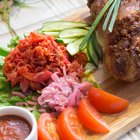
How to Smoke a Ham Shank on a Charcoal ...

How Long to Cook Steak at 150 Degrees ...
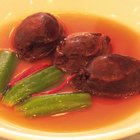
How to Cook Abalone

How to Blanch Sausage
Ideas for a Menu With Bratwurst

How to Grill a Lamb Steak

How Long Do You Cook Haddock Fillets in ...
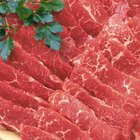
Do You Need to Marinate Flat Iron Steak ...

How to Cook a Bone-in Leg of Lamb
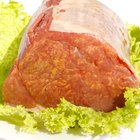
How to Smoke Corned Beef

The Best Ways to Grill Brats
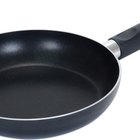
How to Cook Beef Top Round Pot Roast

How to Smoke Pork on a Gas Grill
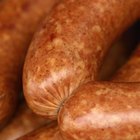
Ways to Cook Beer & Onions With Smoked ...

Can You Cook Beef Shank Cuts Like a ...
References
Tips
- Do not pierce the kielbasa with a fork when handling it; instead, use tongs. Piercing lets the natural juices escape, hurting flavor and texture.
- Serve the kielbasa, peppers and onions on hoagie buns or as an entrée.
- Do not overcook the peppers and onions.
- Cover the skillet while cooking the peppers and onions when you want to cook them faster or more completely. You can add some garlic to them too.
Warnings
- Avoid cross-contamination by adhering strictly to food safety guidelines when handling the uncooked sausage. Wash your hands after handling the raw meat. Use different utensils for raw and cooked meat. Do not put cooked meat on a dish or platter that had raw meat on it.
Writer Bio
A.J. Andrews' work has appeared in Food and Wine, Fricote and "BBC Good Food." He lives in Europe where he bakes with wild yeast, milks goats for cheese and prepares for the Court of Master Sommeliers level II exam. Andrews received formal training at Le Cordon Bleu.